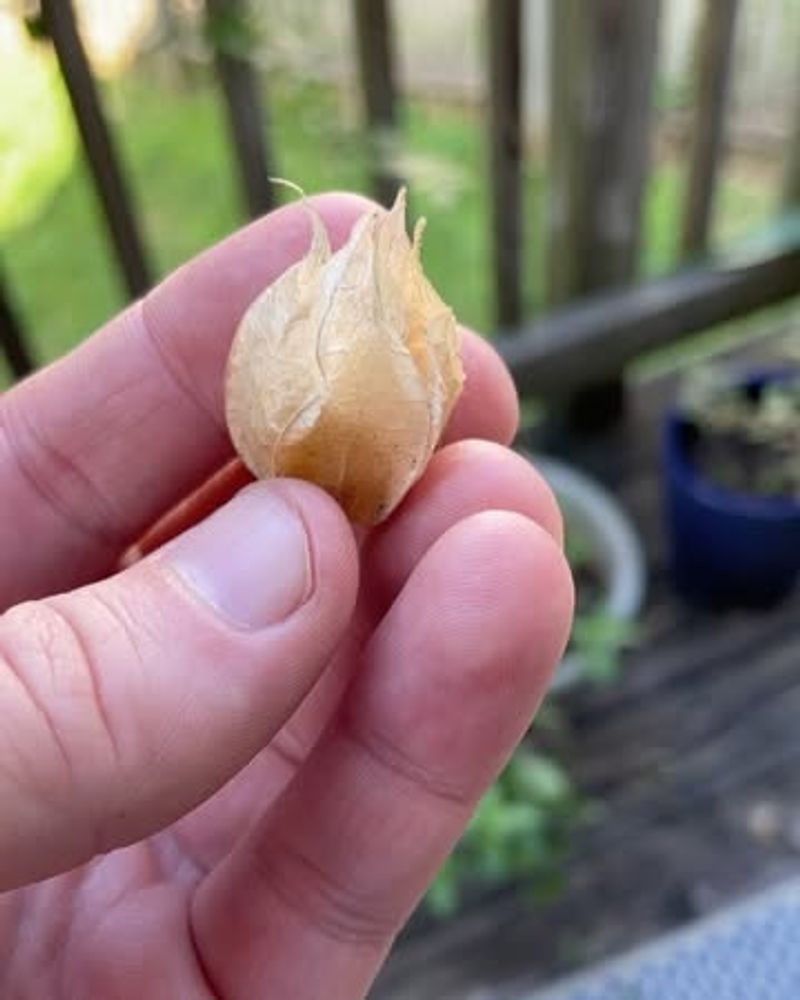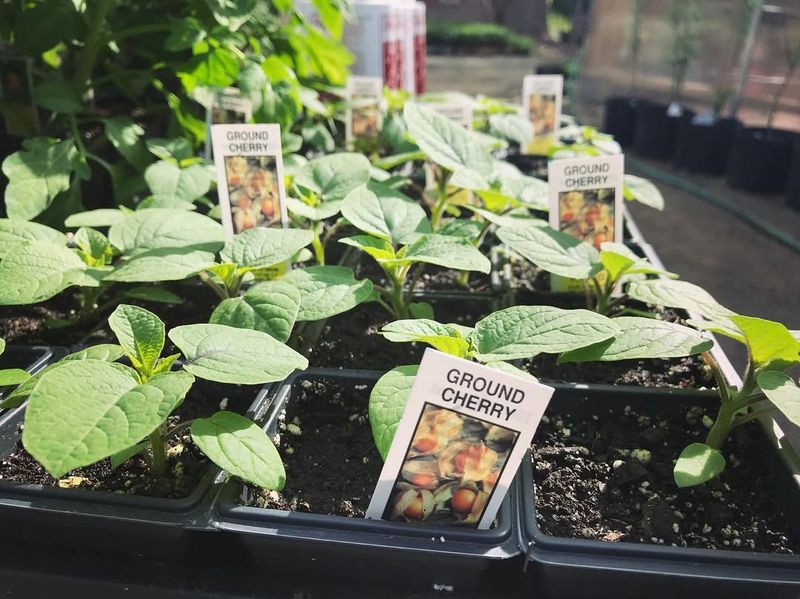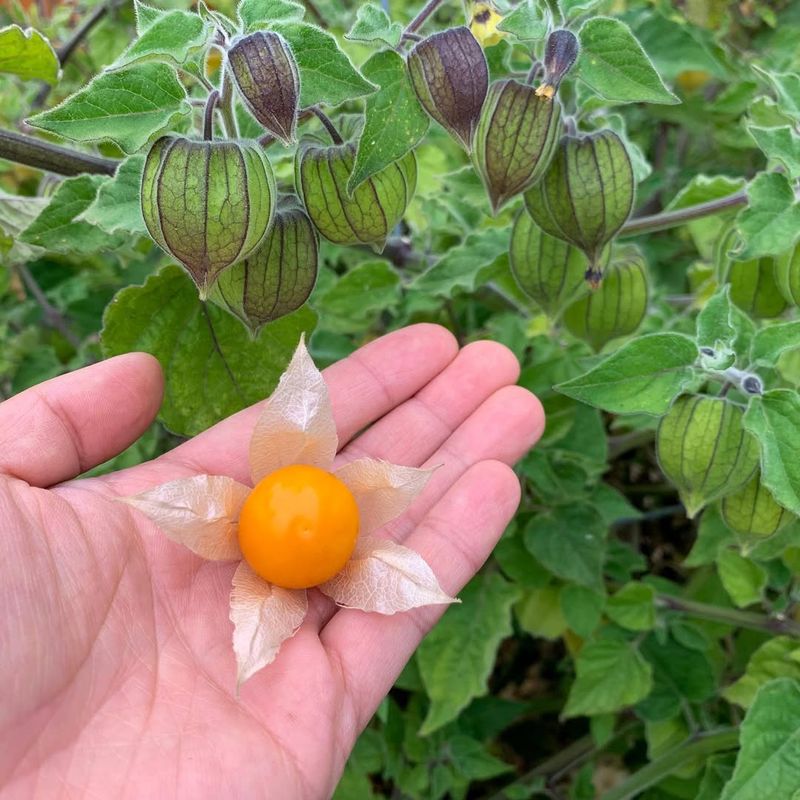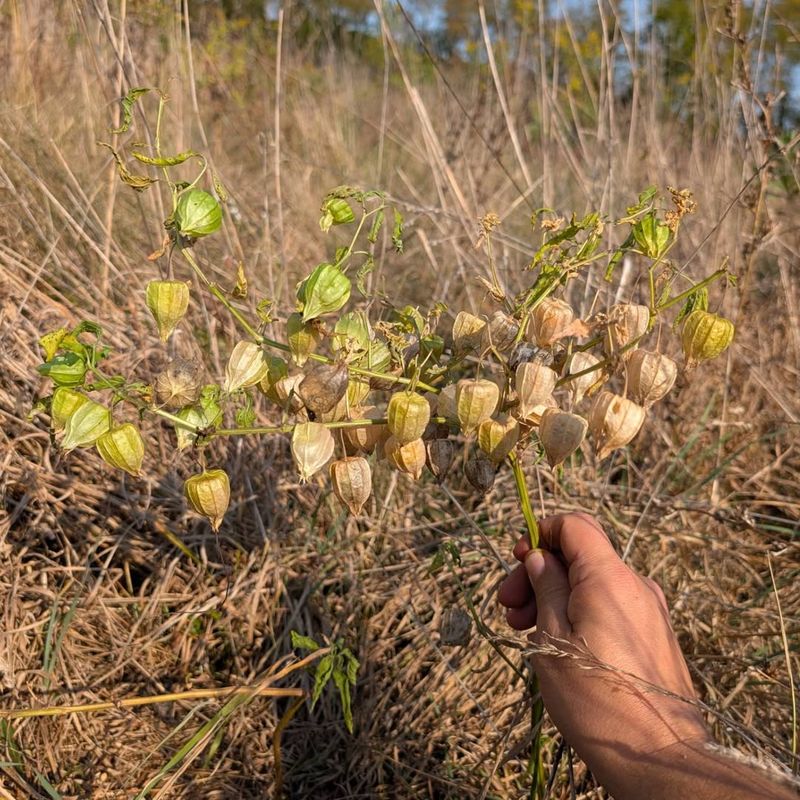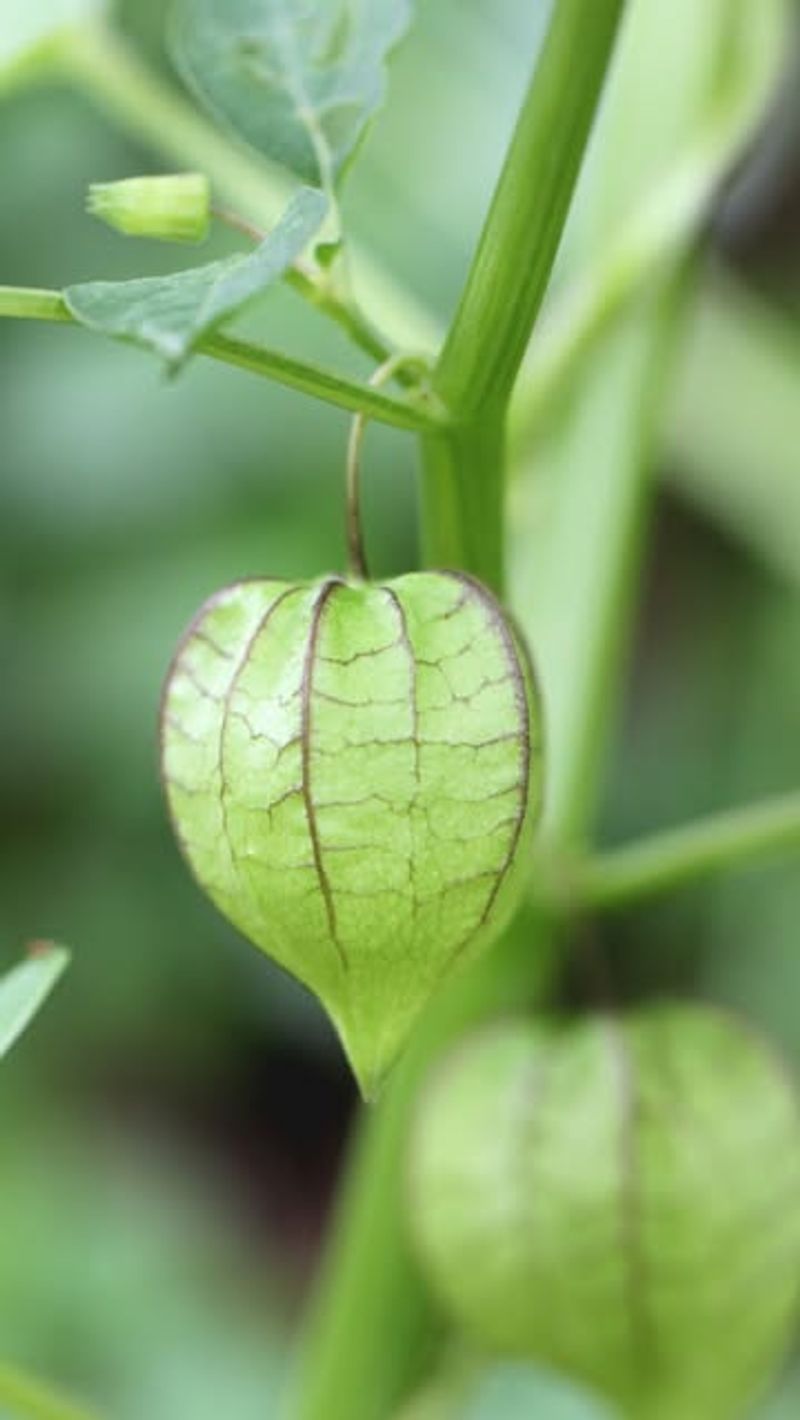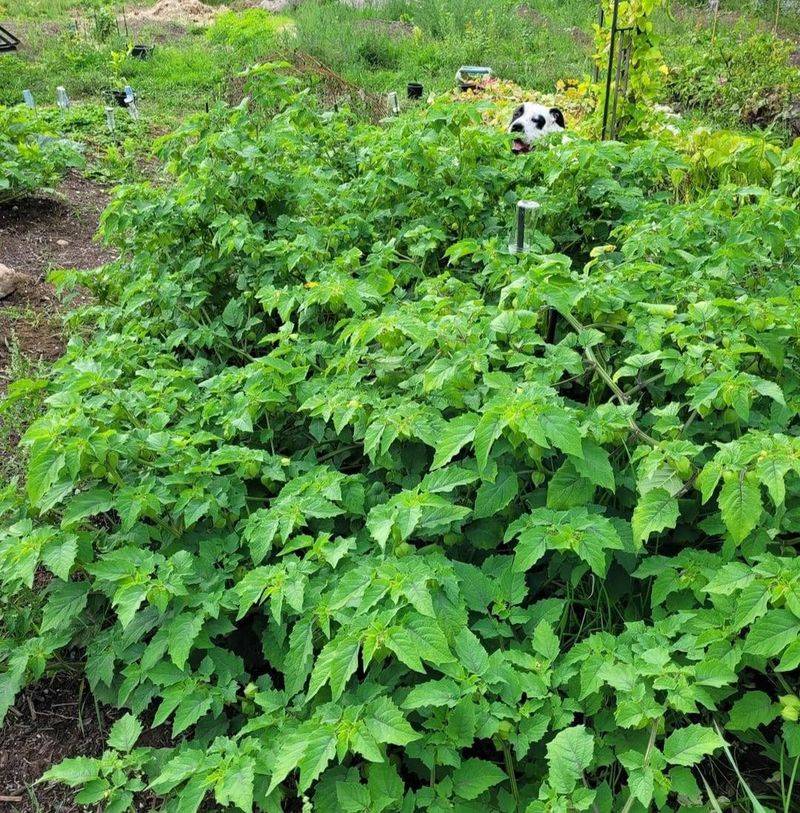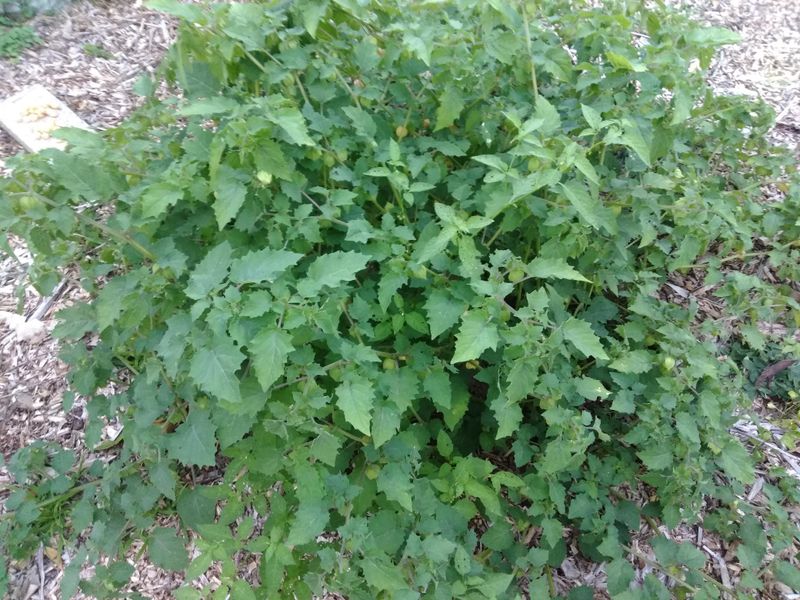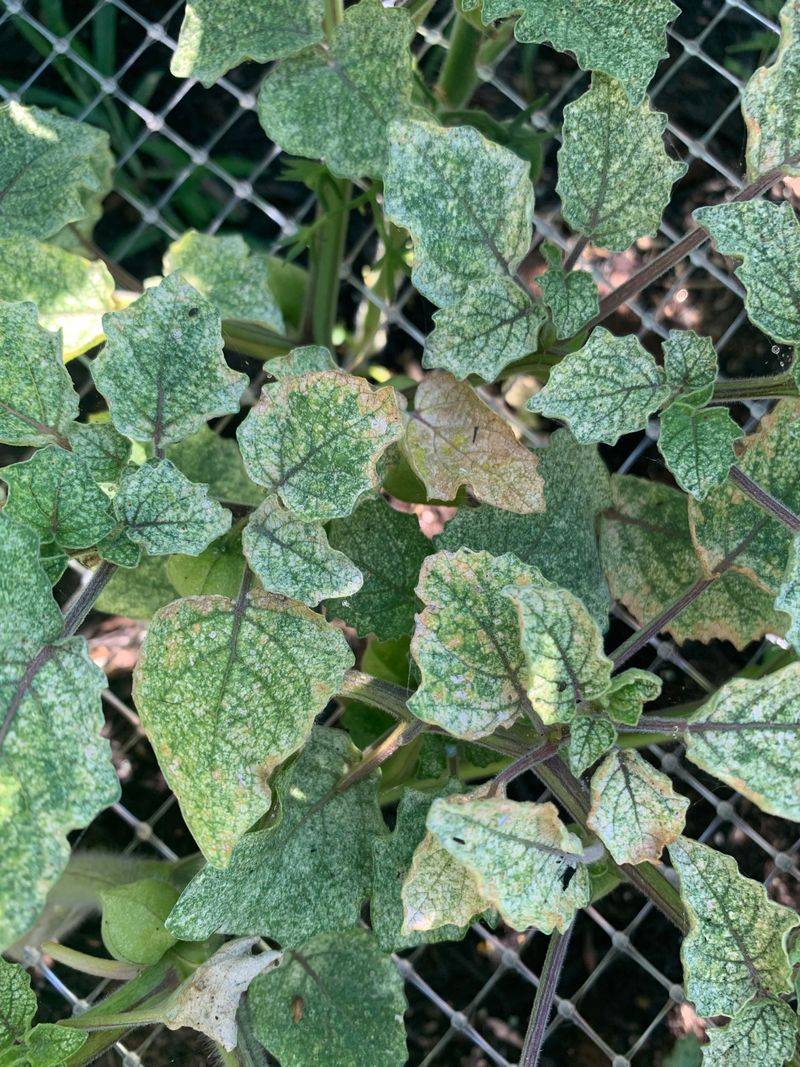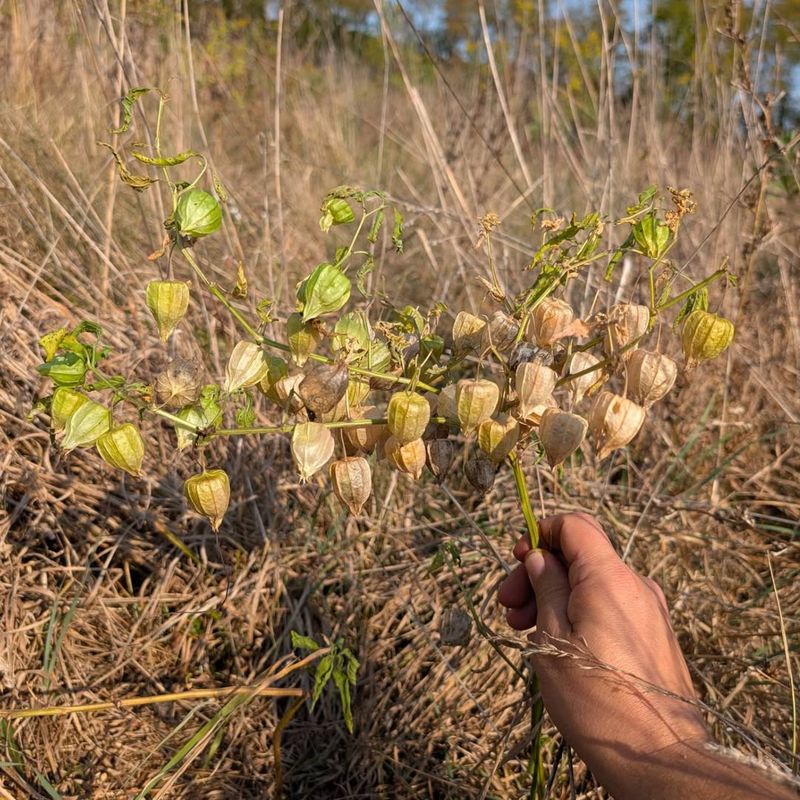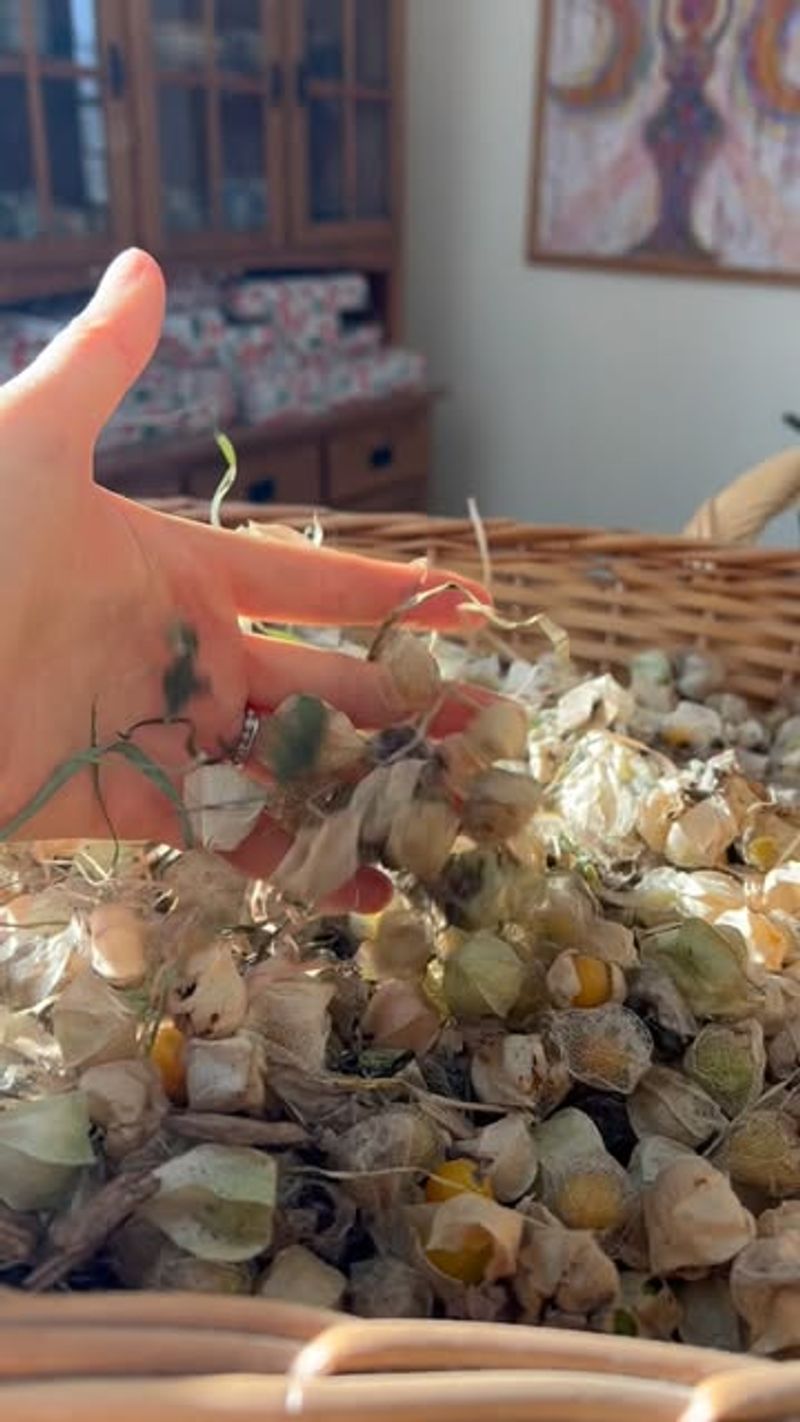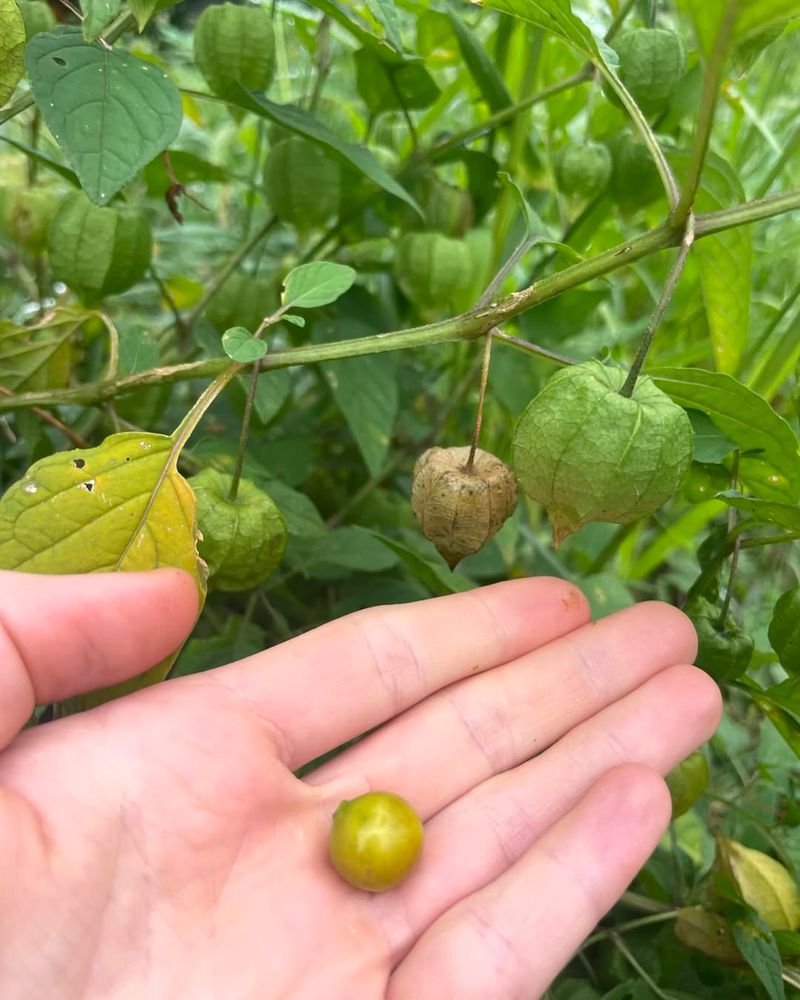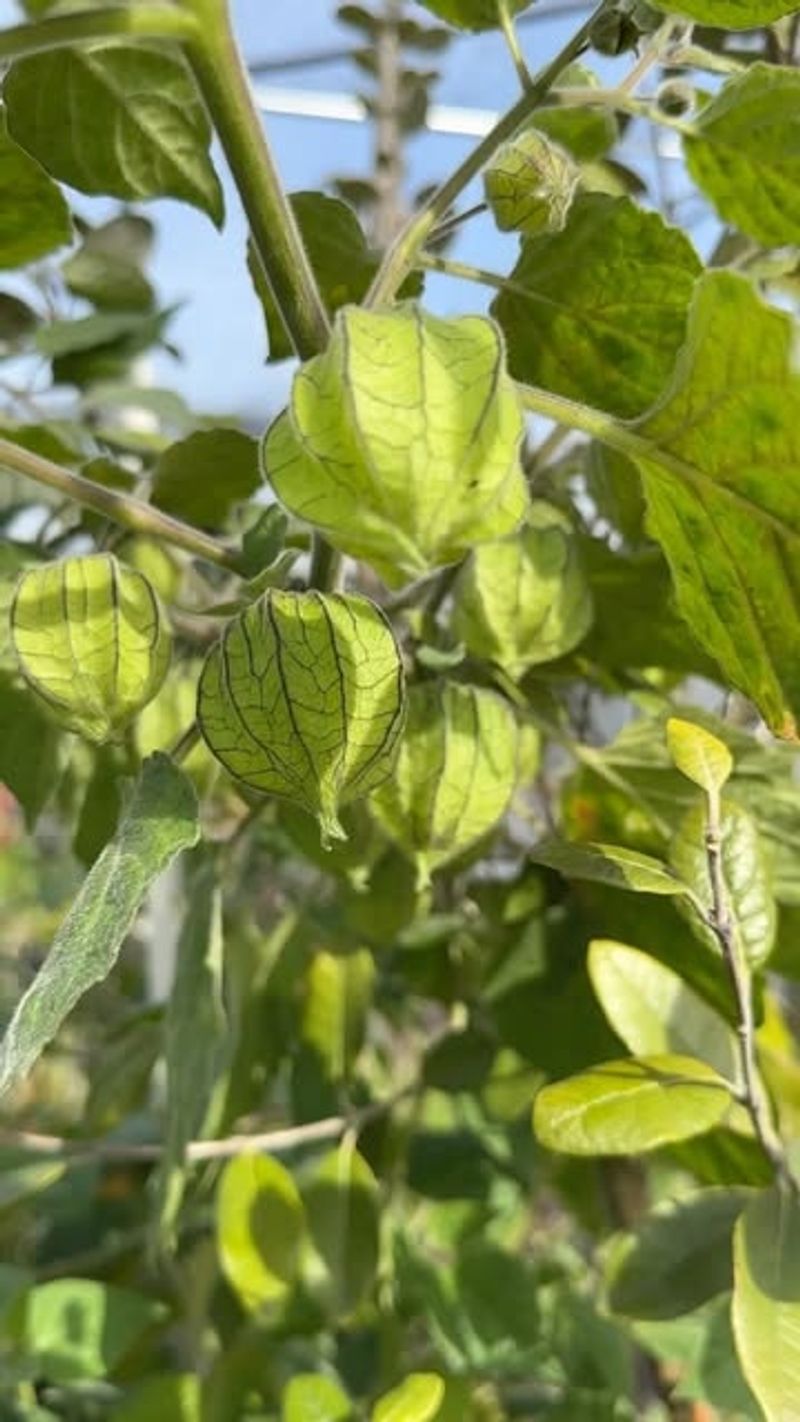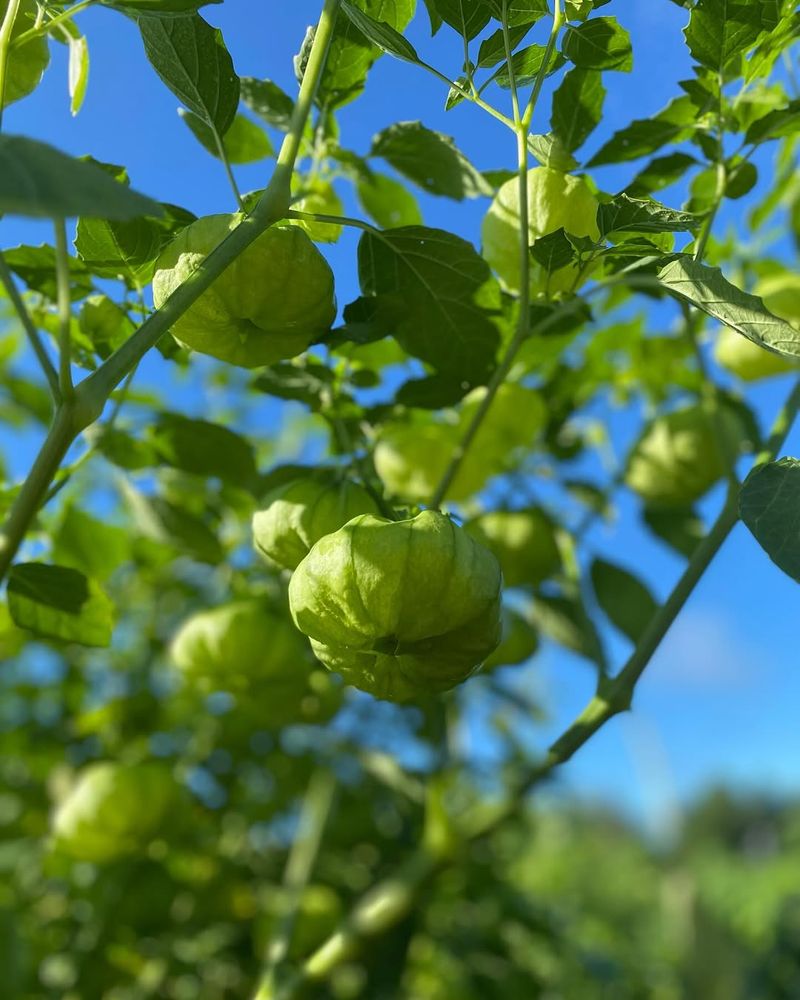Ground cherries are like hidden gems in the gardening world. These small, tomato-like fruits are not only delicious but also unique in their growth habits. Before you start planting ground cherries in your garden, there’s a lot to learn about their needs and quirks, ensuring you get a bountiful harvest.
1. Understanding Ground Cherries
Ground cherries look like tiny tomatillos, encased in a delicate, papery husk. They’re related to tomatoes and share some growing similarities but have their own unique flavor, often described as a mix of pineapple and tomato. Knowing what they are helps gardeners decide if they’re a good fit.
These fruits thrive in warm climates and are typically harvested in late summer to early fall. Their sweet and slightly tart taste makes them perfect for jams, pies, and fresh eating. Recognizing ground cherries’ distinct features ensures you’ll know exactly what you’re growing.
2. Ideal Growing Conditions
Ground cherries flourish in warm, sunny locations with well-drained soil. They need at least 6-8 hours of sunlight a day and benefit from a spot shielded from strong winds. Before planting, ensure your garden mimics their natural preferences for a successful growth journey.
Preparation is key—consider adding compost or aged manure to your soil to improve its quality and fertility. A well-prepared site sets the stage for healthy plants that can resist pests and diseases. Understanding these conditions will help you plan where to plant them for optimal results.
3. Starting Seeds Indoors
Starting ground cherries indoors gives them a head start in the growing season. Use seed trays or small pots filled with a seed-starting mix. Keep them in a warm room, and water gently, ensuring they’re moist but not soggy. Watch as your efforts sprout new life.
Germination usually takes about 7-14 days, with seedlings emerging as tiny green shoots. This early start can help plants mature faster and produce more fruit. By nurturing them indoors first, you’re setting the stage for a thriving garden once they’re moved outside.
4. Transplanting to the Garden
When your ground cherry seedlings are strong and the danger of frost has passed, it’s time to move them outdoors. Transplanting requires careful handling to avoid damaging the delicate roots. Plant them about 2 feet apart to give them room to spread and grow.
Ensuring the soil is warm and the weather is stable ensures a smooth transition. Water them well after planting to help settle the soil around the roots. These steps are crucial to establish a healthy and productive plant, setting them up for successful fruiting later.
5. Watering Needs
Ground cherries prefer moderate watering, enough to keep the soil evenly moist but not waterlogged. Regular, deep watering encourages deep root growth, which supports healthy plants. Too much water can lead to root rot, so striking the right balance is essential.
Mulching around the base of the plants can help retain moisture and reduce evaporation. Pay attention to weather conditions—during dry spells, they may need extra watering. Proper hydration keeps your ground cherries thriving and bearing delicious fruit throughout the growing season.
6. Fertilizing for Success
Feeding your ground cherry plants helps them produce a bountiful harvest. A balanced, slow-release fertilizer or compost can provide the necessary nutrients. Apply these early in the growing season and again when the plants start to flower.
Avoid over-fertilizing, as it can cause excessive leafy growth at the expense of fruit production. Focus on phosphorus and potassium-rich fertilizers to boost flowering and fruiting. Healthy, well-fed plants not only yield more fruit but also resist pests and diseases better.
7. Pruning for Better Growth
Pruning helps ground cherries stay healthy and productive. By removing excess foliage and any diseased or damaged branches, you allow more light and air to reach the plant’s center. This encourages stronger growth and can lead to more abundant fruit production.
Regular inspection and trimming keep plants tidy and discourage pests and diseases. Consider pruning once the plants are well-established and continue through the growing season. This practice ensures that your ground cherry plants remain vigorous and fruitful all year round.
8. Pest Management Tips
Protecting ground cherries from pests requires vigilance and natural solutions. Common pests include aphids and flea beetles, which can damage leaves and fruits. Employ companion planting, like marigolds, to deter insects naturally.
Regularly check your plants for signs of infestation. Applying horticultural oils or insecticidal soaps can help manage outbreaks without harmful chemicals. Integrated pest management keeps your garden healthy and minimizes environmental impact, ensuring your ground cherries grow strong and pest-free.
9. Disease Prevention
Keeping ground cherries disease-free involves proactive care. Good air circulation and proper spacing between plants minimize the risk of fungal diseases. Rotate crops annually to reduce soil-borne pathogens, and avoid overhead watering to prevent leaf diseases.
Choose disease-resistant varieties if available, and remove any infected plant material promptly to prevent spread. By maintaining cleanliness and monitoring plant health regularly, you ensure robust plants that will produce well. Prevention is the best cure when it comes to garden diseases.
10. Harvesting Ground Cherries
The right time to harvest ground cherries is when they fall to the ground. These fruits naturally drop when ripe, making it easy to collect them. Look for a golden yellow color, indicating they’re sweet and ready to eat.
Gently gather them from the soil and remove the husks before enjoying. Ground cherries can be eaten fresh or used in recipes like pies and preserves. Harvesting at the right moment ensures the best flavor and a rewarding gardening experience, celebrating the fruits of your labor.
11. Storing Your Harvest
Proper storage keeps ground cherries fresh for weeks. After harvesting, let them dry in a single layer to prevent mold. Keep them in their husks and store in a cool, dry place. They don’t require refrigeration, which makes them easy to store.
Ensuring they’re dry before storage is vital to prolong their shelf life. You can enjoy them fresh, or they can be frozen for later use. This method allows you to savor their unique flavor long after the growing season has ended, making your harvest last.
12. Using Ground Cherries in Recipes
Ground cherries are versatile in the kitchen. Their sweet-tart flavor pairs wonderfully with both sweet and savory dishes. Consider making ground cherry pie, jam, or salsa. They add a surprising twist to salads and desserts, bringing a unique taste to your meals.
Experimenting with these little fruits can lead to delightful culinary discoveries. They can be baked, cooked, or enjoyed fresh. With a bit of creativity, ground cherries will become a favorite ingredient in your home, enhancing everything from breakfast to dessert.
13. Nutritional Benefits
Ground cherries offer plenty of nutritional value. They’re rich in vitamins A, C, and B-complex, providing a boost to your immune system. High in antioxidants, these fruits help fight free radicals in the body, promoting overall health.
Their low-calorie content makes them a guilt-free snack, perfect for a healthy diet. Including ground cherries in your diet can contribute to your daily intake of essential nutrients, supporting a balanced and wholesome lifestyle. They’re not only delicious but also packed with health benefits.
14. Cultural Significance and History
Ground cherries have a rich history, dating back to ancient civilizations. Native to the Americas, they were cultivated by indigenous peoples long before European settlers arrived. Their unique flavor and versatility made them a staple in traditional diets.
Understanding their cultural significance adds depth to the gardening experience. These plants have traveled through history, adapting to various cultures and cuisines. Appreciating their past enhances the joy of growing them, connecting gardeners to a shared heritage of cultivation and enjoyment.
15. Varieties to Explore
Exploring different varieties of ground cherries opens up a world of flavors and colors. Some popular types include ‘Aunt Molly’s’, known for its sweet taste, and ‘Pineapple’, which offers a tangy twist. Each variety presents unique characteristics, catering to diverse preferences.
Choosing the right variety depends on your taste and growing conditions. Experimenting with different types can lead to surprising discoveries in your garden and kitchen. With so many options, there’s a perfect ground cherry variety for every gardener to explore and enjoy.
16. Troubleshooting Common Issues
Solving common ground cherry problems requires patience and observation. Issues like poor fruiting or leaf yellowing can arise from nutrient deficiencies or environmental stress. Identifying these problems early helps in taking corrective action quickly.
Consulting gardening guides or local experts can offer solutions tailored to your specific situation. Keeping a vigilant eye on your plants ensures they remain healthy and productive. By addressing these challenges, you maintain a thriving garden and enjoy a fruitful harvest each season.
17. Sharing with Wildlife
Ground cherries attract various wildlife, adding life to your garden. Birds and small mammals may nibble on the ripe fruits, enjoying the sweet treat. While sharing with wildlife can be frustrating, it also highlights a thriving ecosystem.
To balance, consider planting extra or using netting to protect your crop. Accepting some loss to nature is a part of gardening, fostering a harmonious relationship with the environment. Watching wildlife enjoy your garden can bring joy, even as you work to protect your harvest.



